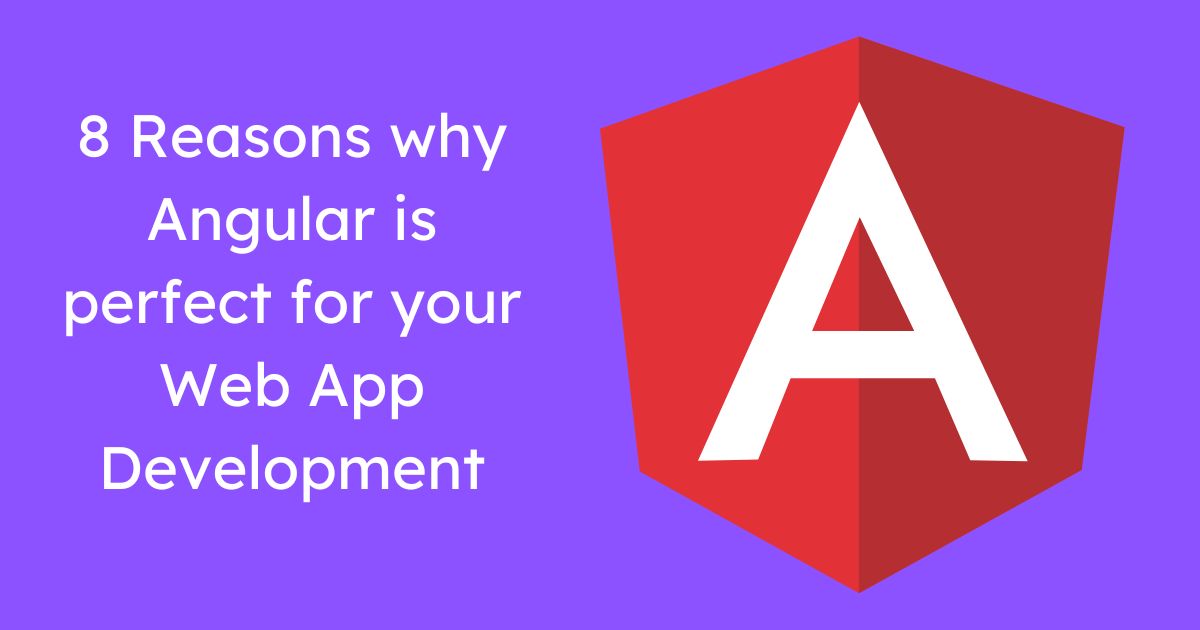
The latest update of Angular is Angular 12, which was released in May 2021. This update includes improvements in performance, developer experience, and compatibility with the latest versions of TypeScript and RxJS. Many web app development services favor Angular due to its user-friendly syntax and efficient lazy loading features.
Some of the key features of Angular 12 include:
- Faster builds with stricter type-checking
- Improved hot module replacement (HMR) support
- Updated ESLint configuration
- Improved support for Webpack 5
- Updated Angular Material components
Angular stands out as the go-to web app framework favored and endorsed by numerous developers and peers alike. Its popularity is evident in the rising download numbers over recent years.
Efficient web performance is integral to your online effectiveness. Tools like Google’s Lighthouse provide valuable insights into web application performance. Swift loading speeds, a key element for achieving a high Lighthouse score, are a hallmark of Angular development.
Let’s delve into some Angular features that will enable you to craft top-notch web applications for your business.
Simple Syntax (Typescript)
When selecting a front-end framework, syntax is crucial. For web app development, opting for a framework with straightforward syntax is paramount. Angular, built on TypeScript, a superset of JavaScript developed by Microsoft, fits the bill perfectly.
Typescript in Angular will provide:
- More features than Javascript
- It integrates JS libraries easily.
- Ease of plain Javascript
JavaScript libraries are invaluable for custom web app development, offering a wealth of pre-built front-end components and services. TypeScript simplifies development by enabling the use of plain JavaScript syntax and facilitating browser-based debugging.
MVVM Architecture
Angular 2 introduced a transition from MVC architecture to MVVM (Model-View-ViewModel). This shift aimed to address the limitations of MVC architecture. Unlike MVC, where changes in the view don’t automatically reflect in the model, MVVM ensures better synchronization between the view and the model.
The MVVM architecture utilizes a JavaScript function known as ViewModel, akin to the controller but facilitates real-time updates of the Model based on View changes. Leveraging MVVM architecture in Angular enhances content loading performance, crucial for achieving higher Lighthouse scores.
Modular Approach
In Angular, the modular approach involves organizing various components, directives, and services. Think of a web app built with Angular as a puzzle, where each module is essential for the full picture. Some modules remain hidden from other parts of the application, allowing developers to make background changes without affecting functionality. Conversely, there are exported modules or elements accessible to all parts of the app. This modular structure enhances flexibility and maintenance.
Lazy Loading
When aiming to boost loading speeds, adopting lazy loading proves to be highly effective. With Angular development services, you can leverage lazy loading to create Progressive Web Apps (PWAs), providing offline capabilities.
Angular’s modular approach proves invaluable here. By dividing the application into distinct modules, specific components can be rendered earlier than others, enhancing efficiency. This practical execution allows for prioritizing the loading of essential content, such as high-quality images or critical data, over secondary elements.
Dependency Injection
In any web application, various services or components form a cohesive suite. Angular simplifies the process of dependency injection (DI) among these components, a crucial aspect of web app development to maintain testability and flexibility.
Angular utilizes injectors to manage the execution of services in their appropriate contexts. By instructing injectors through Angular app elements, the framework ensures services are created as needed. This approach ensures that every component functions seamlessly within your web application, akin to a well-coordinated system.
Angular Pipes
When building a large-scale web application accessible across platforms, you’ll require functionalities such as language switching, currency conversion, and data formatting adjustments. Angular includes pre-built pipes within the framework, enabling you to easily create custom data transformations. With Angular pipes, you can seamlessly modify dates, times, percentages, and text according to your needs.
Scalability
Angular provides enhanced scalability through features such as lazy loading and pipes. Leveraging lazy loading can significantly enhance user experience, while Angular pipes enable the provision of advanced features to customers. Particularly for eCommerce web app development, Angular offers a plethora of unique tools to optimize performance and customer engagement.
Rapid Development
Angular enables coding and debugging on the fly, significantly reducing overall development time. Its MVVM architecture facilitates two-way data binding, allowing seamless data modification between the view and model. Additionally, Angular’s modular approach expedites the creation of Minimum Viable Products (MVPs).
Conclusion
Angular stands out as an exceptional framework for your web app development journey, offering unparalleled interoperability with back-end technologies like Node.js. Whether crafting a single-page application or a progressive web app (PWA), Angular emerges as the prime option for front-end development. So, instead of wavering over various choices, opt for top-notch web app development services equipped with Angular expertise to ensure optimal performance and seamless functionality.








Профессиональный сервисный центр по ремонту бытовой техники с выездом на дом.
Мы предлагаем:ремонт крупногабаритной техники в москве
Наши мастера оперативно устранят неисправности вашего устройства в сервисе или с выездом на дом!